Andrew Luk: Echoes of the Past
By Oliver Clasper
Full text also available in Chinese.
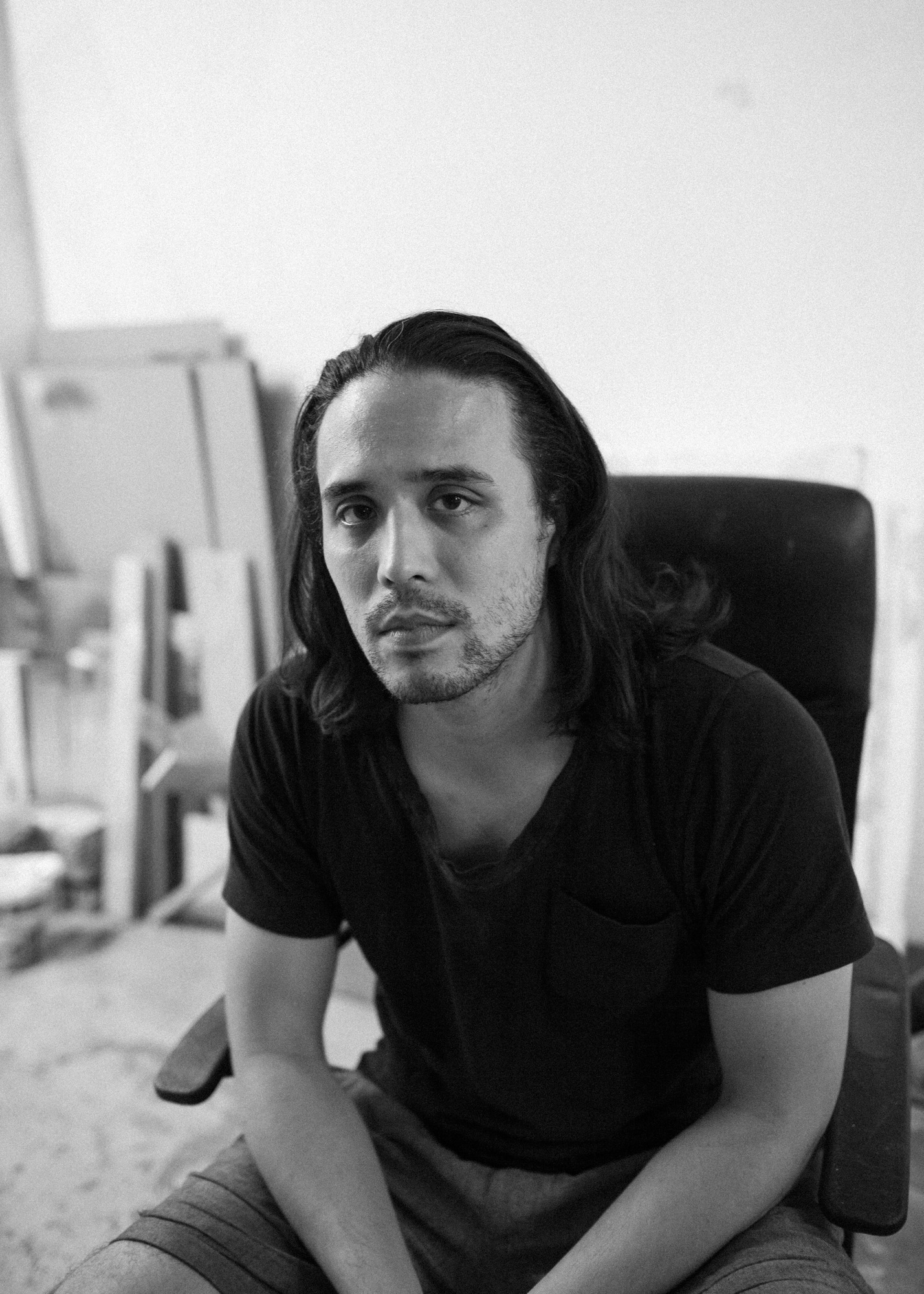
Portrait of ANDREW LUK in his Tai Kok Tsui studio. All images by Oliver Clasper for ArtAsiaPacific.
As we age, the passage of time becomes harder to trace. Eight years have elapsed since I was last in this part of Tai Kok Tsui, an industrial area of Hong Kong‘s Kowloon peninsula populated by warehouses and manufacturing workshops. Back then, Andrew Luk was working out of his old studio across the hall from French artist Charles Munka in a rundown building a few blocks from where he is currently based. I remember Luk graciously showing me around one afternoon as he discussed the pieces he was working on, but besides a subsequent encounter in 2019 we hadn’t seen each other in the intervening years. Reacquainting myself with his body of work, I was reminded of the rigorously philosophical and complex nature of his creations and the strange, almost ectoplasmic materiality of his process, much of which is imbued with potent historical foundations and temporal resonances.
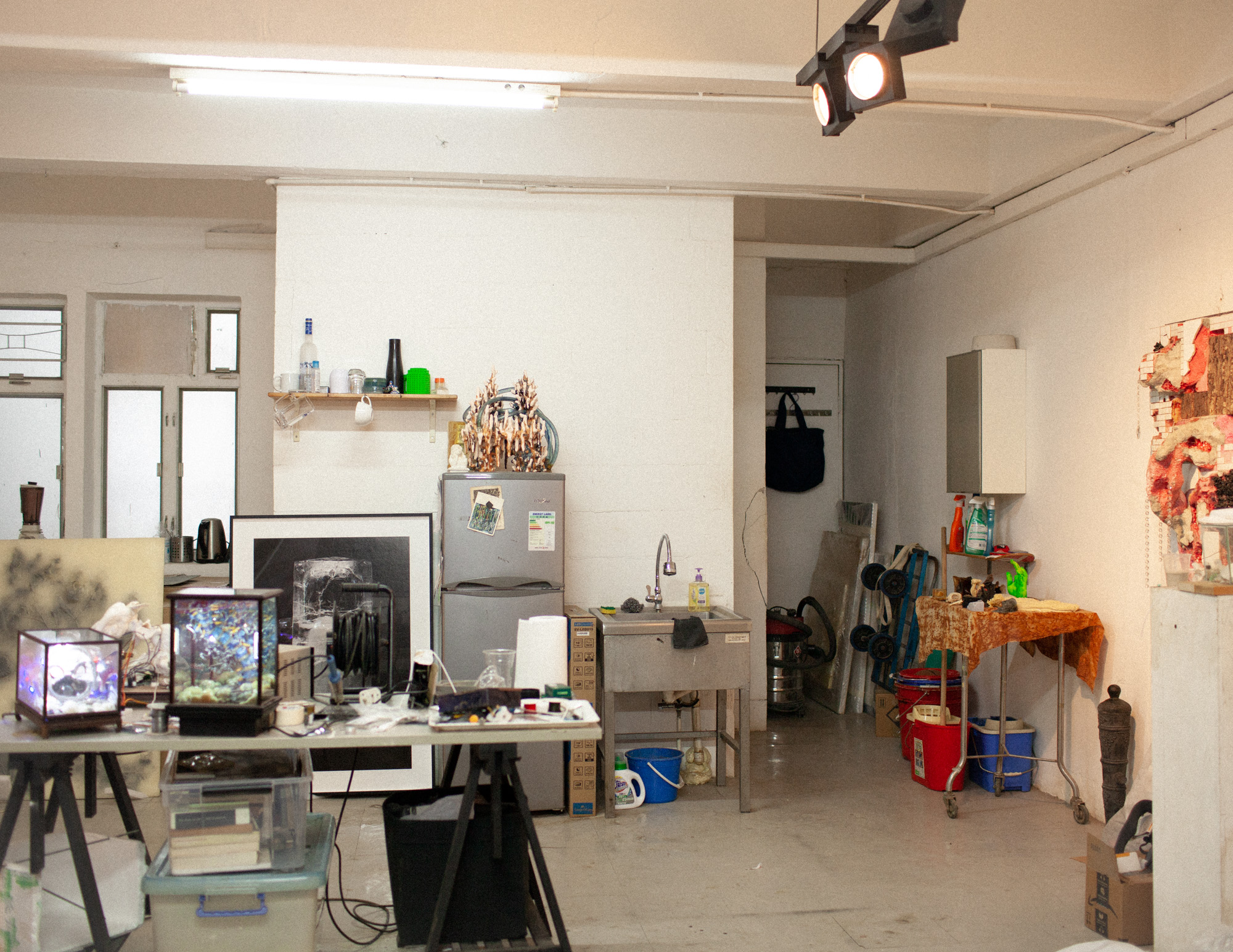
Interior view of ANDREW LUK’s studio.
The last decade has seen Luk produce a staggering collection that has relied, in part, upon the environment in which he lives. This is evident in an early series, No Fixed Abode (2014), which decontextualized discarded and redundant elements of an abandoned warehouse near his studio. Here, he reconstituted and reconstructed glass, window frames, bricks, aerials, and pipes into stand-alone sculptures, adding layers of interpretation to their form by removing them from their original context. Likewise, in Disparate Echoes Reverberating (2020), Luk, as arch interrogator, recast boundary stones located on the Admiralty hillside around the Asia Society complex (a former British navy barracks and armaments depot) as a wry comment on colonial power structures. Shown in the galleries of Asia Society, Echo Chorus: Dissolve was made out of ice that slowly melted; Echo Chorus: Sustenance, made of salt blocks, dissolved over time in the nearby terrain, subject to the elements and the wild animals. “It’s time travel through artwork, in a sense, and what that does to your brain. It rewires it in a way that you think differently about the future, and the past.”
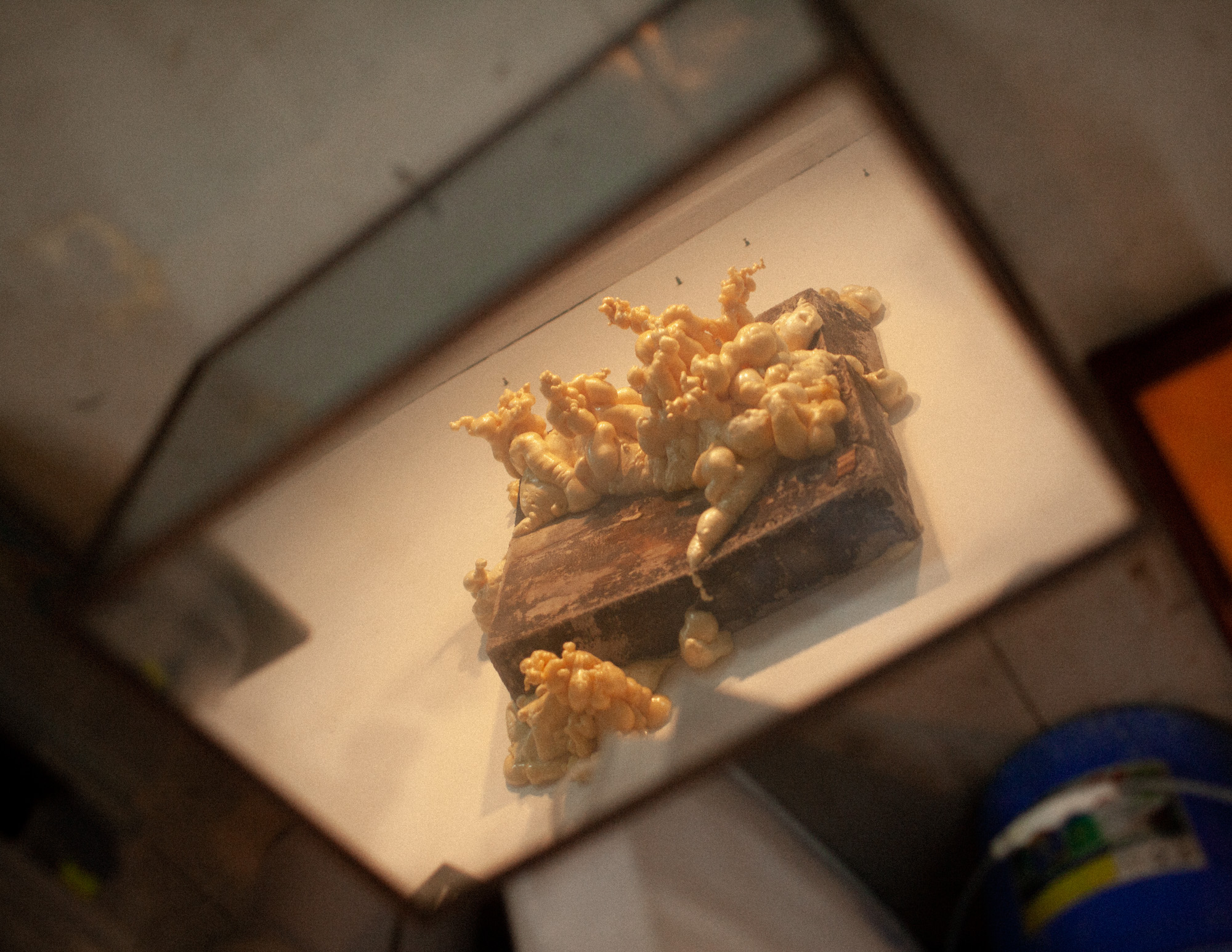
Reflected image of The Fragility of Things Built from Rocks series (2018-22).
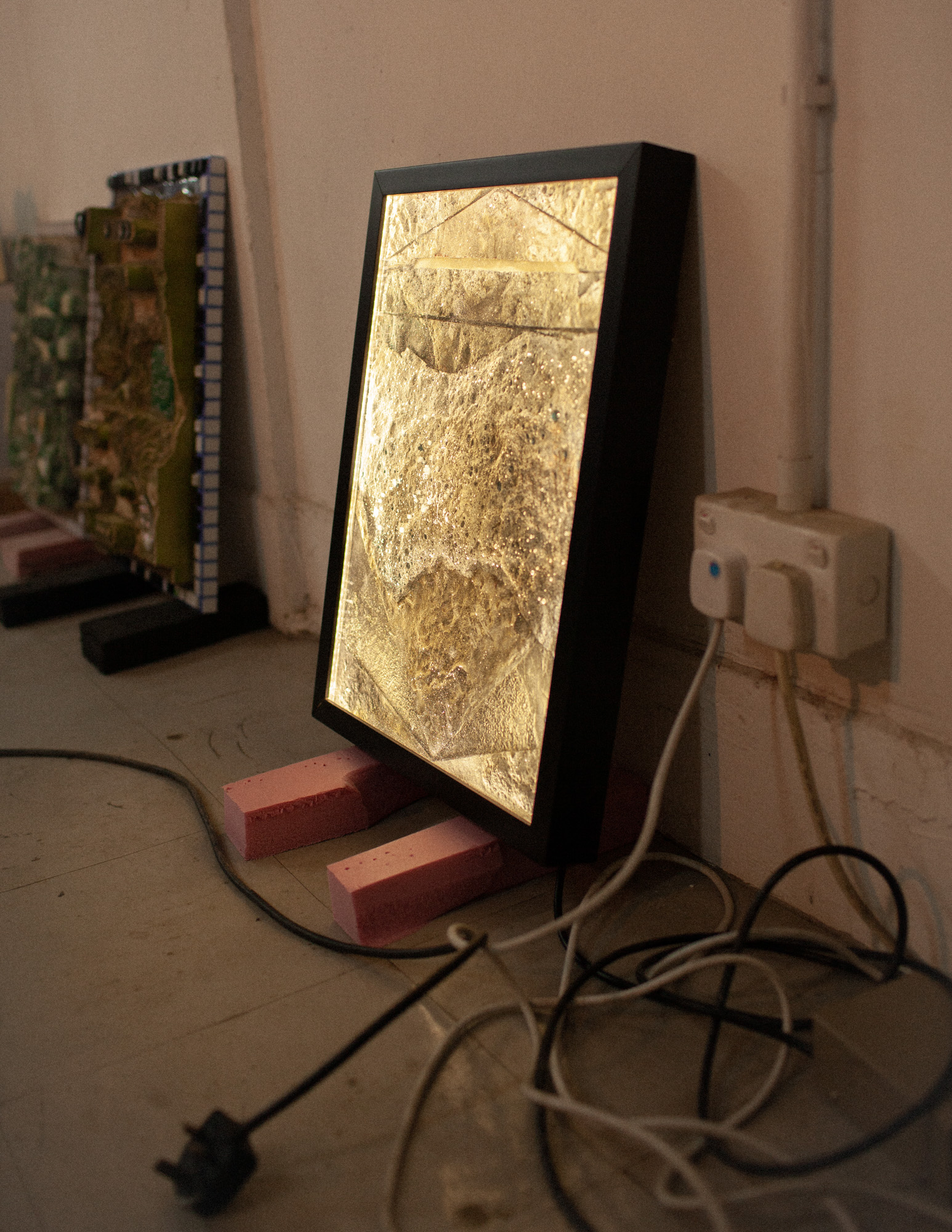
Image of Horizon Scan series (2017).
Over the years, Luk has collaborated with a number of artists to explore alternative notions of physical movement and historical space: a choreographer and dancers in the conceptual performance piece Haptic Compression (2017); game designers in Autosave: Redoubt (2016), a first-person shooter simulation video based on the World War II tunnel system near the Shing Mun reservoir. But the majority of his practice remains tautly visceral and alchemical in regard to his methodology and his materials—epoxy resin, ammonia, plaster, copper, aluminum, charcoal, steel, lumber, cornstarch, concrete, and expanding foam—not to mention bracingly singular in terms of his vision. In Oxidization/ Immolation (2016) he concocted homemade napalm and torched its surface to explore “encroaching entropy and violent combustion”; in Horizon Scan (2017), a topographical investigation into the disembodiment and collapse of the environment, he again used napalm, this time covering it with resin and placing it in light boxes. And in The Fragility of Things Built from Rocks (2018–22) Luk filled hollow concrete boxes with expanding foam that remained liquid until he cracked open the boxes using a sledgehammer, at which point the foam activated and burst outwards—akin to the body horror and ’90s sci-films he grew up watching. It is in many of these projects that he has examined the symbiosis, synthesis, and conflict between the natural and the artificial and challenged our notions of deep time, entropy, and historical encoding, adding layers of meaning to artifacts of the past that are restive and hidden. One gets the feeling from his practice that if past history is to be told, it must be told with the ruins.
In many respects Luk’s works are, themselves, organisms. Gestural, tactile, and viscous, they shift between dilation and decay. Even his old studio was a kind of living entity, suggesting a latent in uence of the environment on his practice. The previous tenant had bred dogs there, kept them chained in metal cages, leaving them to suffer in horriffic conditions until the authorities kicked down the door and cleared him out. For months after, whenever it rained, brown matter seeped through the walls and the dank, foul odor of those poor creatures would linger in the air. On better days, he was forced to contend with damp and mold and the pools of water that amassed on the floor. Every morning before going to work, and every evening upon returning, he would mop it up, only for the process to repeat itself.
His current studio on Larch Street is markedly less putrid or degenerate. Long and rectangular, with white walls and windows at the far end and at the back covered in black bin liners to block the light while he’s working—the only intrusion being the fine particles of ash from paper offerings burned during ceremonies at the funeral homes around the corner that settle in his space whenever the wind happens to be blowing in the right direction. Old works hang on the walls or rest on the floor; odd collectables, assorted ephemera, and the broken casts of durian fruit are scattered here and there. At the back, a fridge, a sink, a sofa, a coffee table. Toward the front there is a large workbench, a half-empty bookshelf, buckets full of what appears to be neon- yellow plasticine, brushes, tools, an old office chair, and a large up-cycled chandelier, an untitled work in progress. It is neither overtly cosy nor picturesque, a neat reflection of the functional nature of this city.
The reason for this current state is that Andrew Luk is clearing out, throwing things away, putting things in storage, and packing his bags. His time in Hong Kong—the city in which he grew up, the city he loves, the city that has provided the source and inspiration for so much of his work—is coming to an end, for now at least. During the long years of the pandemic in Hong Kong, when the virus exposed the vulnerability of our systems and our global networks, when work was disrupted and travel ground to a halt, and when the future became less certain, he decided it was time for a new challenge. There were also professional concerns to contend with. “Stu happened,” he says diplomatically, stubbing out a cigarette. I don’t press. It’s a small scene. While he showed his work all over the city—from galleries to private collections, even receiving a large spotlight at Art Basel Hong Kong in 2021— he concluded that he either needed to move his practice to mainland China or take up residencies overseas and start moving his work that way. Neither option suited him: “I’m somebody who needs a studio,” he says quietly, looking up at his soon-to-be- vacated space. “I’m like a dog. I need patterns in my life and a sense of place. That kind of jet-set lifestyle where I can show up in a different country and suddenly make work doesn’t sit well with how I think and what I do.”
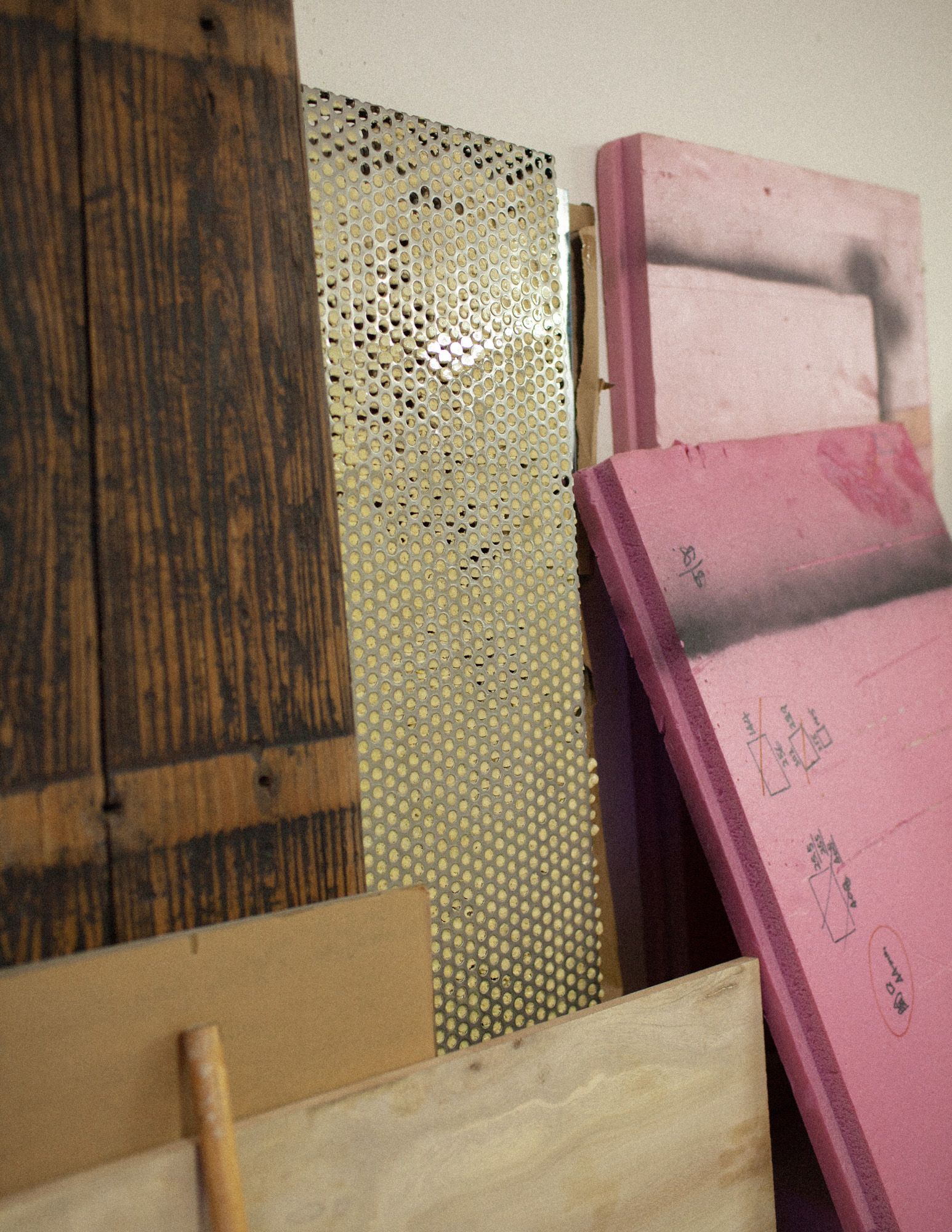
Photo of various types of materials in ANDREW LUK’s studio.

Framed photograph of Echo Chorus: Dissolve.
He had been contemplating graduate school for some time, but it wasn’t until his partner pushed him that he filled out the requisite applications, waited patiently, and was eventually accepted into Yale’s MFA sculpture program. “I’ve noticed in the art market globally that things are at a weird shift, and it’s probably a good time to rethink what I’m doing and reflect. Hopefully I can push to make work that’s not necessarily redesigning the wheel but doing something that’s uncomfortable for me and that’s experimental and difficult. I want to find a life mission in how I work.” When I ask him if he considered leaving regardless of any postgrad o er, his response is unequivocal: “No, this is home.” And when he talks about the northeastern United States, where he completed his undergraduate degree in 2010, and what he expects to fi nd in New Haven, Connecticut, doubt, for the first time, enters his voice. He admits to feeling a certain trepidation about returning to the US, but he is an optimist at heart and welcomes the challenges that lie ahead, especially the opportunity to work with the artists who teach at Yale and “push the envelope” a little further.
Stasis, stagnation, regression—these are serious creative and professional concerns for any artist, but especially so for Luk. “I want to be the best I can be,” he says. “I want to engage with the best and learn from the best.” To this point, he admits that many of his ideas have begun to feel stale of late, that he’s hit a critical dead end. “I’m afraid of changing too much, but a certain element of discomfort allows you to grow. The trick is to understand when that’s a positive thing and when it’s negative.” As for the future, it is, he contends, unknown: “The past is the only thing we have that’s concrete, and the present is just a sliver of experience in time.”
.jpg)






